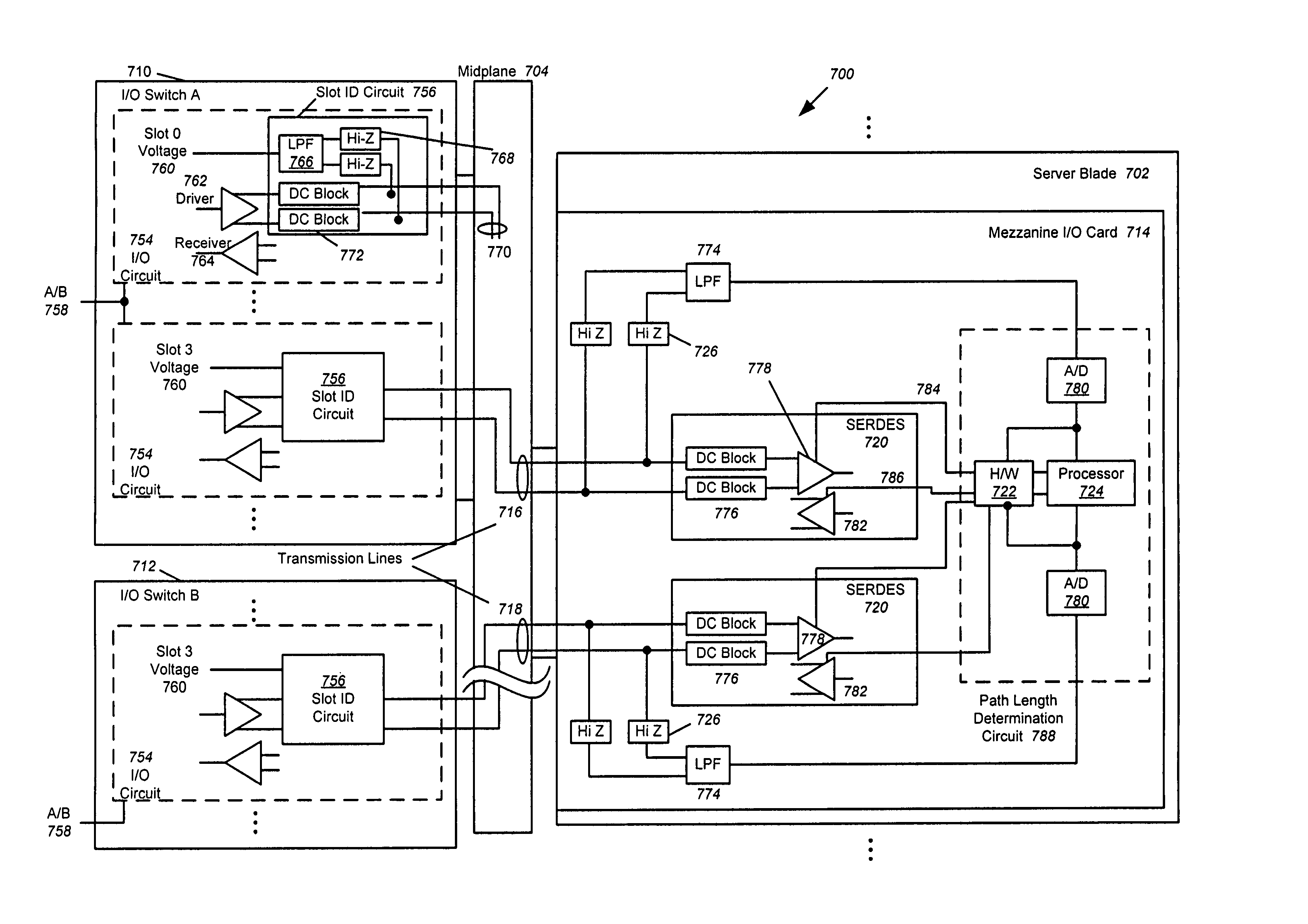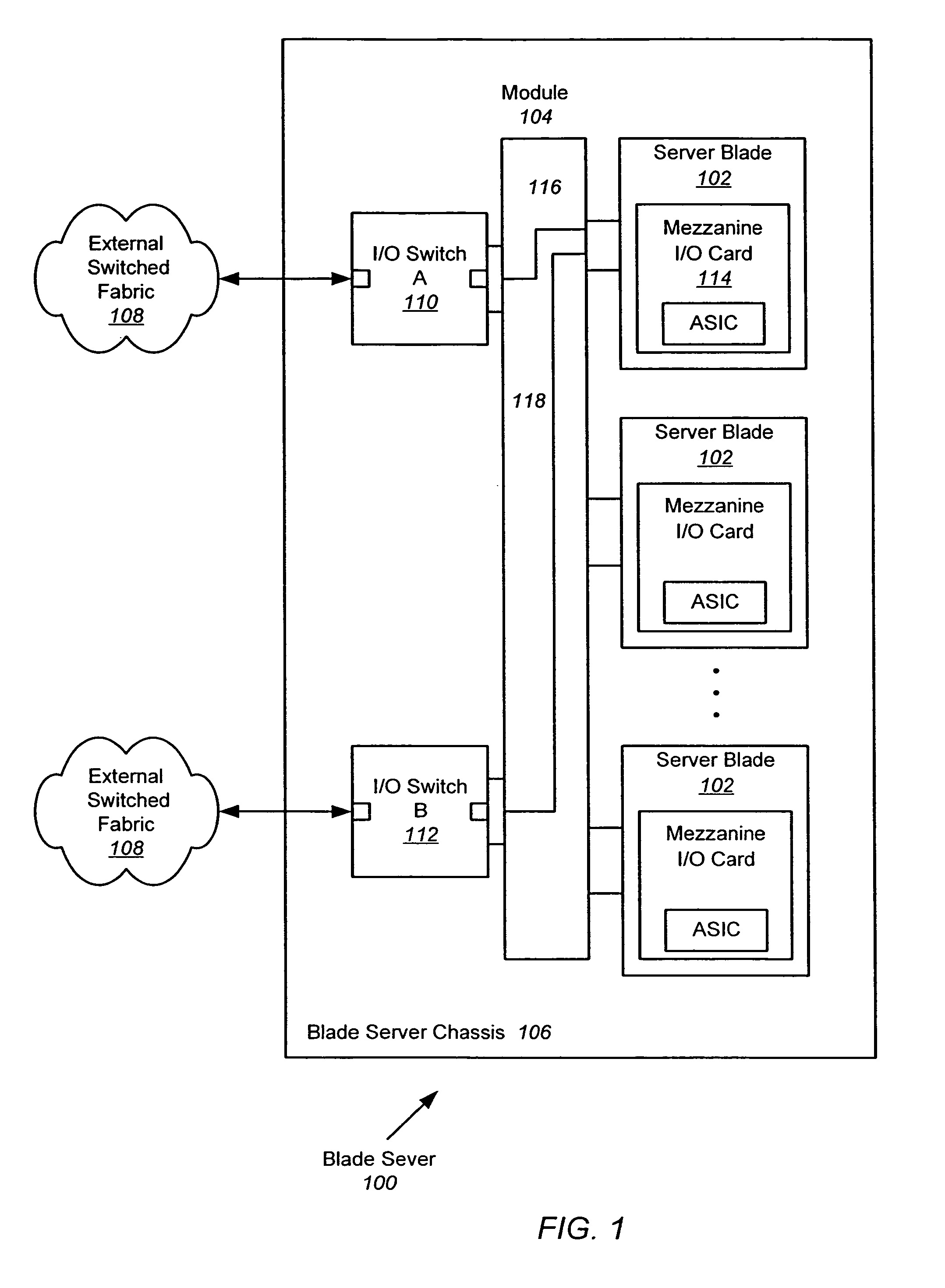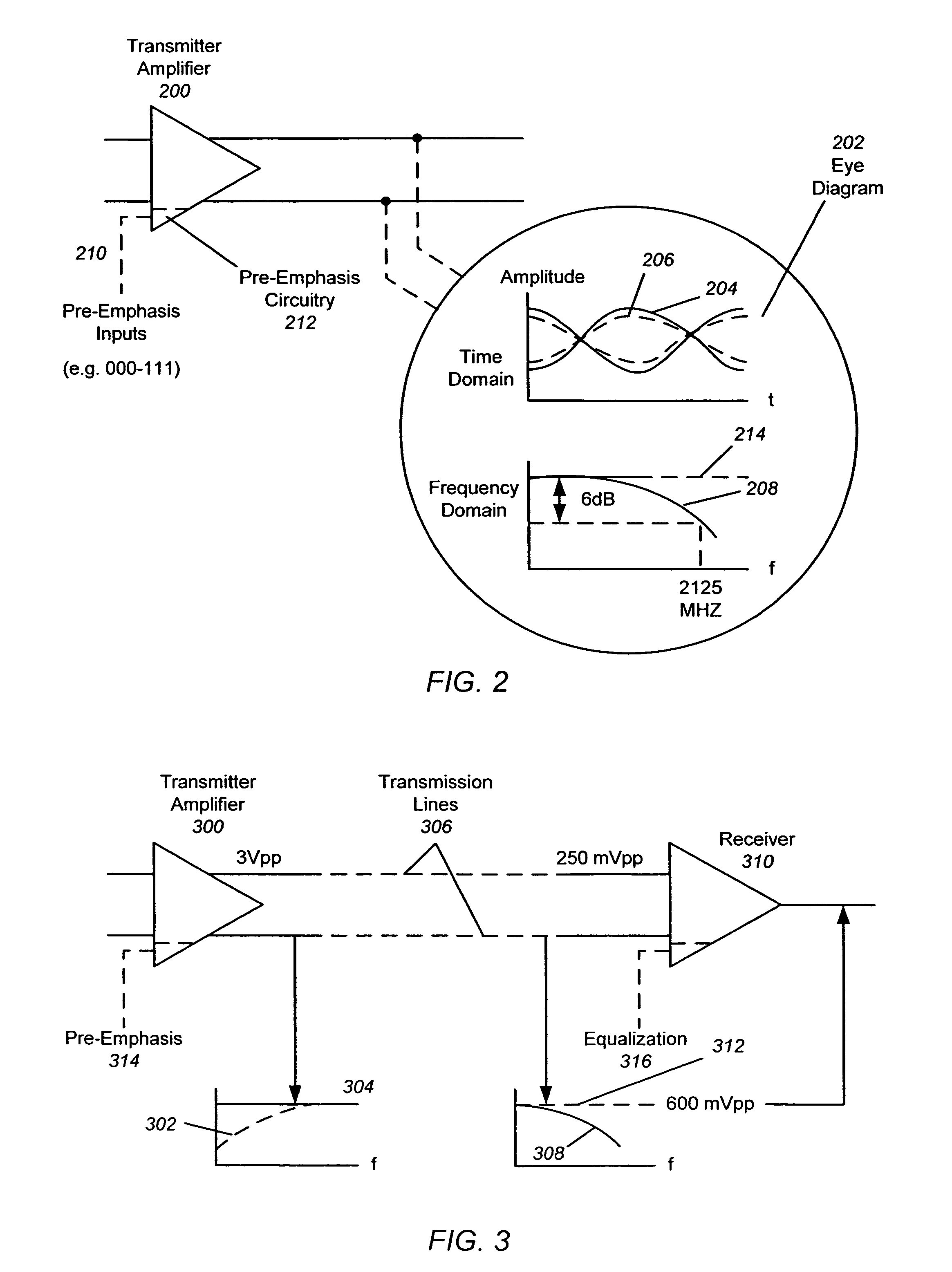Data path differentiator for pre-emphasis requirement determination or slot identification
a data path and requirement technology, applied in the field of communication, can solve the problems of inability to accurately transmit data with acceptable error rates, inefficient space, power, cooling and other characteristics, transmission errors and unacceptable error rates,
- Summary
- Abstract
- Description
- Claims
- Application Information
AI Technical Summary
Benefits of technology
Problems solved by technology
Method used
Image
Examples
Embodiment Construction
[0034]In the following description of preferred embodiments, reference is made to the accompanying drawings which form a part hereof, and in which it is shown by way of illustration specific embodiments in which the invention may be practiced. It is to be understood that other embodiments may be utilized and structural changes may be made without departing from the scope of the preferred embodiments of the present invention.
[0035]Although embodiments of the present invention may be described herein primarily in terms of FC signaling, it should be understood that the present invention is not limited to FC, but includes InfiniBand, Ethernet, Serial Attached Small Computer System Interconnect (SAS), Serial ATA (SATA) signaling and the like. Implementation of these protocols requires that the midplane support the protocol.
[0036]FIG. 4 is an illustration of an exemplary blade server 400 with multiple server blades 402, each server blade including a controller, host interface card, HBA, o...
PUM
 Login to View More
Login to View More Abstract
Description
Claims
Application Information
 Login to View More
Login to View More - R&D
- Intellectual Property
- Life Sciences
- Materials
- Tech Scout
- Unparalleled Data Quality
- Higher Quality Content
- 60% Fewer Hallucinations
Browse by: Latest US Patents, China's latest patents, Technical Efficacy Thesaurus, Application Domain, Technology Topic, Popular Technical Reports.
© 2025 PatSnap. All rights reserved.Legal|Privacy policy|Modern Slavery Act Transparency Statement|Sitemap|About US| Contact US: help@patsnap.com



